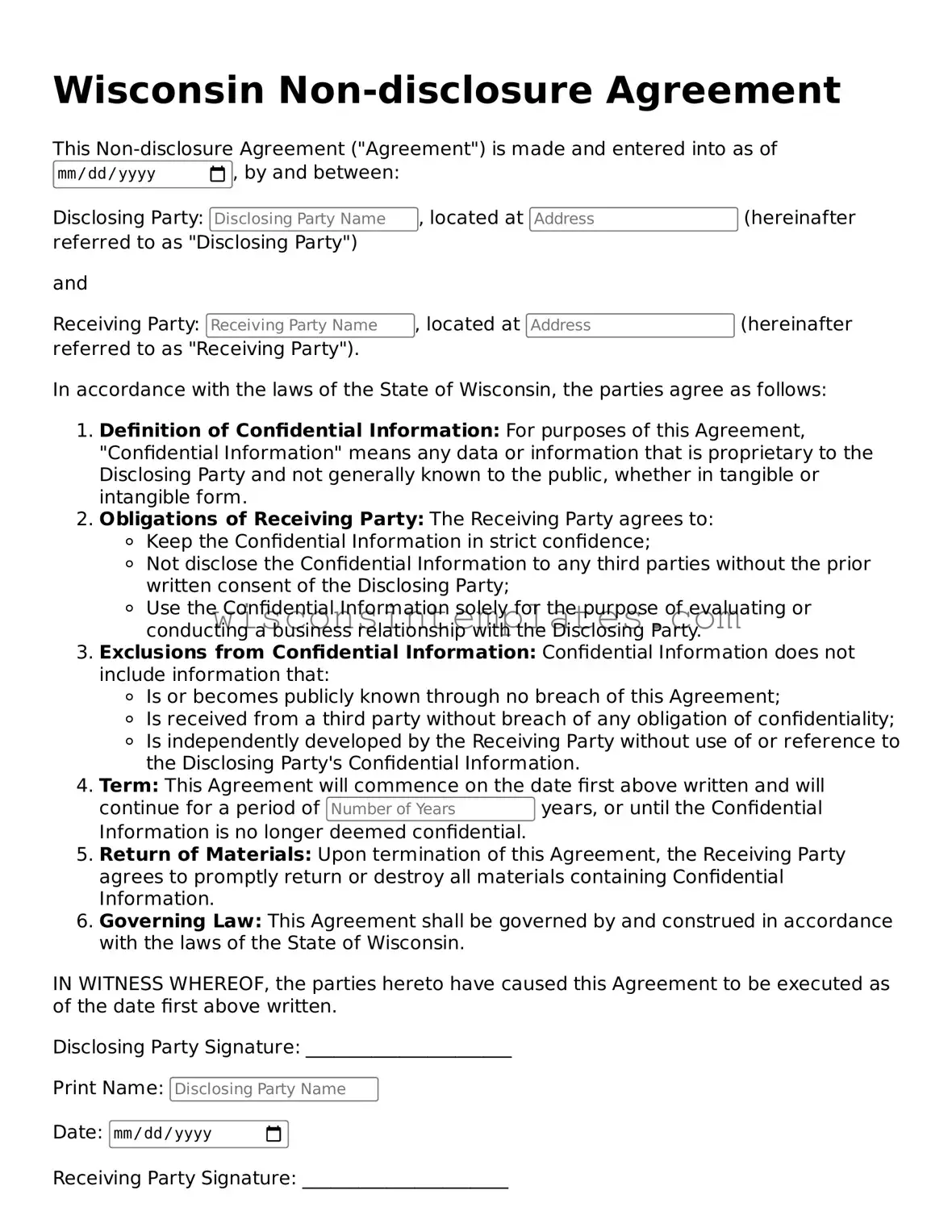Legal Non-disclosure Agreement Form for Wisconsin State
A Wisconsin Non-disclosure Agreement (NDA) is a legal document designed to protect confidential information shared between parties. This form establishes clear guidelines on what constitutes confidential information and outlines the obligations of both parties to maintain its secrecy. Understanding the implications of this agreement is crucial for individuals and businesses looking to safeguard sensitive data.
Launch Editor Now
